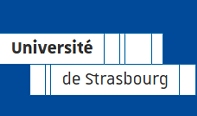Dr. Jack F. Douglas "Cooperative Motion and Structural Relaxation in Glass-Forming Materials"
National Institute of Standards and Technology (NIST), Gaithersburg, Maryland, USA
| What |
|
|---|---|
| When |
Jul 13, 2015 from 11:00 AM to 11:45 AM |
| Where | Amphithéâtre ICS, Rue du Loess 23, Strasbourg |
| Add event to calendar |
|
Collective motion and relaxation in coarse-grained polymeric liquids are investigated by complementary molecular dynamics (MD) simulations and analytic modeling. MD simulation indicates that nanoparticle additives, which can effectively modify molecular packing, can cause significant changes in both the strength of the temperature dependence of structural relaxation time τ (as measured by the ‘fragility’ of glass formation) and the spatial extent of cooperative particle motion in the form of string-like dynamic structures that spontaneously emerge at equilibrium in glass-forming liquids. Physical arguments of Adam-Gibbs (AG) relating the rate of structural relaxation to the extent (average mass) of cooperative motion in glass-forming liquids are summarized and we test whether this model can rationalize the large nanoparticle additive-induced changes in polymer melt dynamics found in our simulations where the string excitations are directly identified with the abstract “cooperatively rearranging regions” of AG (see Refs. 1 and 2 for discussion). This comparison leads to a remarkable reduction of all our relaxation data and provides a new means of testing the AG model. These observations are consistent with the implicit AG picture that changes in the fragility of glass-forming liquids with the addition of additives, finite size confinement, and changes of molecular structure derive from changes in the strength of the temperature dependence of the extent of cooperative molecular motion. The classical entropy theory of glass-formation, combining a thermodynamic calculation of the configurational entropy sc and the AG model of structural relaxation relating τ to sc, is considered as a complementary tool to gain analytic insights into these additive-induced effects on the temperature dependence on structural relaxation in glass-forming liquids.
References:
1) Francis W. Starr, Jack F. Douglas, and Srikanth Sastry, “The relationship of dynamical heterogeneity to the Adam-Gibbs and random first-order transition theories of glass formation” J. Chem. Phys. 138, 12A541 (2013).
2) Beatriz A. Pazmiño Betancourt, Jack F. Douglas, and Francis W. Starr, “String model for the dynamics of glass-forming liquids” J. Chem. Phys. 140, 204509 (2014).
invited by Prof. Jörg Baschnagel and Prof. Günter Reiter

